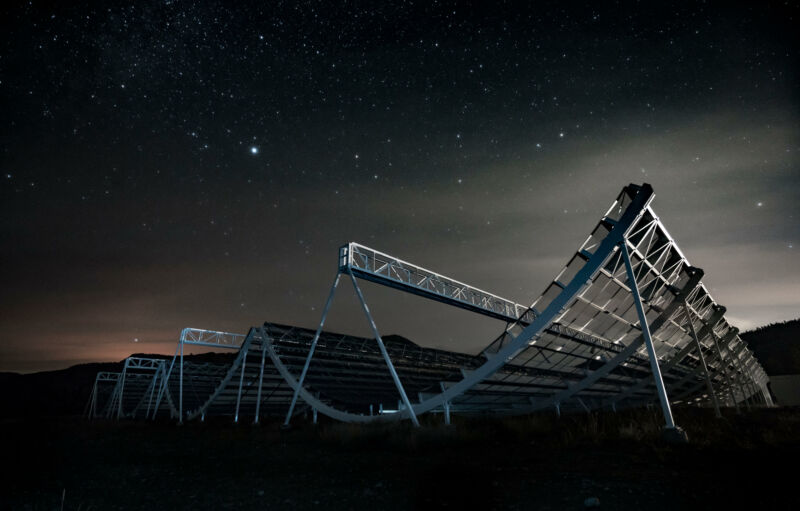
Enlarge / The CHIME telescope has proven adept at picking up fast radio bursts. (credit: Andre Renard / CHIME Collaboration)
Today, researchers are announcing they've solved one of the questions that has been nagging them over the past decade: what exactly produces the weird phenomena known as fast radio bursts (FRBs)? As their name implies, FRBs involve a sudden blast of radio-frequency radiation that lasts just a few microseconds. We didn't even know that FRBs existed until 2007 but have since cataloged hundreds of them; some come from sources that repeatedly emit them, while others seem to burst once and go silent.
Obviously, you can produce this sort of sudden surge of energy by destroying something. But the existence of repeating sources suggests that at least some of them are produced by an object that survives the event. That has led to a focus on compact objects, like neutron stars and black holes, with a class of neutron stars called magnetars being viewed very suspiciously.
Those suspicions have now been borne out, as astronomers have watched a magnetar in our own galaxy sending out an FRB at the same time it emitted pulses of high-energy gamma rays. This doesn't answer all our questions, as we're still not sure how the FRBs are produced or why only some of the gamma-ray outbursts from this magnetar are associated with FRBs. But the confirmation will give us a chance to look more carefully at the extreme physics of magnetars as we try to understand what's going on.
No comments:
Post a Comment